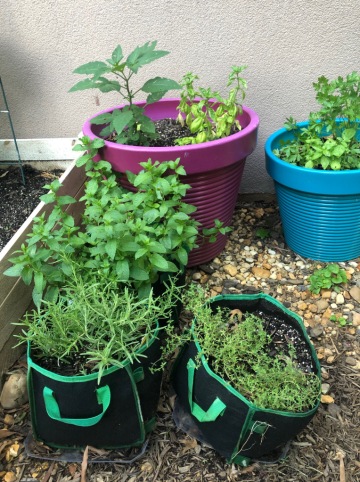
I’ve written about rosemary and the mint family of herbs and spices here and here so I won’t go into detail about the history, medicinal quality, and specific uses.
I have been reading about and studying the mint family of herbs for some time and continue to be impressed with their health benefits. What I noticed is that they have common medicinal benefits though each one is unique on its own. Here is a summary of their shared characteristics.
Many if not most of the mint family of herbs were first recorded by the Egyptians especially their use in embalming. Their use as ingredients in food are more popularly recognized as part of the Mediterranean basin cuisine – which is as diverse and varied among the countries upon which it is comprised as it is among all nations in the world. These herbs make the flavor of food stand out. Just by adding minute quantities of these herbs to various foods you can boost the flavor of food and decrease the amount of other nutrients that are not as healthy such as sugar and salt.

All herbs of the mint family have antimicrobial, antifungal, and antiseptic properties making them useful as food preservatives and for treating topical infections. Did you know thyme is an active ingredient in Listerine, hand sanitizer, and acne medication? Most herbs of the mint family have been shown to be more potent preservatives than synthetic ones commonly used by the food industry such as BHT and BHA. While BHT and BHA are on the Generally Recognized as Safe list by the Food and Drug Administration, the National Institutes of Health’s National Toxicology Program concludes that in large amounts they are carcinogenic.

Lemon balm, lavender, thyme, and peppermint are useful for anxiety, stress, and sleep aids. Peppermint is particularly useful for gastrointestinal problems such as inflammatory bowel diseases like ulcerative colitis and Crohn’s disease. Peppermint, I was surprised to learn, is particularly useful for headaches and migraines but also reduces sensitivity to pain. These herbs have a soothing effect whether taken internally or used in aromatherapy. Lemon balm (Joe Malone), lavender (Tom Ford), peppermint (Ralph Lauren) and rosemary (Issey Miyake) are common ingredients in many well-known perfumes.

All of the herbs in the mint family are excellent sources of antioxidants and anti-inflammatory agents. This is my personal favorite reason to use them even if you are not particularly interested in them as food ingredients. As I have written before, antioxidants and anti-inflammatory agents are the current theory for how we keep disease at bay. These compounds aid the body as it fights its daily battle to stave off infections and the ravages of living in an environment that puts your body under constant attack. The ORAC scores for herbs are some of the highest recorded for such miniscule amounts of food ingredients. As I have written before, the ORAC score is a proxy for possible antioxidant activity. The numbers only tell how much antioxidant is present; it doesn’t tell you whether the antioxidants are used by the body. When I hear people talk about taking a dietary supplement, “just for insurance against disease,” I often want to tell them, “You are on the wrong path buddy.” The real fighters against disease are in your herb/spice cabinet. Among herbs in the mint family, the highest ORAC scores belong to oregano, rosemary, and thyme – in that order.
Growing any of the herbs from the mint family yourself can be an awesome experience. As I have written before, growing plants improves both mental and physical health. I grow my herbs in pots in a sunny location outdoors. When I am cooking, I take my scissors and snip a bit of this or that to add to almost any food. It is fun and interesting to experiment with different tastes which I have a hand in creating.

While I am a big fan of herbs and spices, they are not a substitute for qualified professional medical advice and/or the use of synthetic pharmaceuticals when necessary. One does not have to forgo one for the other. Synthetic drugs are based on chemicals from plants but in more potent doses. Most synthetic drugs are far more potent than the small amount of bioactive chemicals from herbs or their essential oils. Plant foods and herbs can help you achieve and maintain health as well as solve minor health annoyances. If I have a bad headache, I might take an aspirin or two because it is fast and harmless. Varro Tyler, a foremost authority of pharmacognosy, studied the benefits of herbal medicine for minor health annoyances, but he was quick to point out they are not a panacea for professional medical advice or pharmaceutical drugs. My advice is to use these herbs generously and judiciously in your food but very cautiously for medical conditions. There are too many instances of famous and not-so-famous people avoiding sound medical advice in favor of questionable alternative treatments – with negative results. Check out the website What’s the Harm? for details.


Leave a Reply